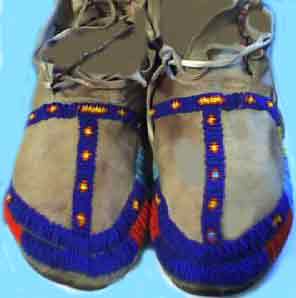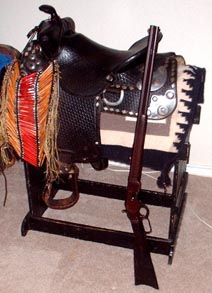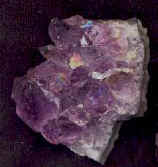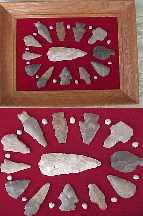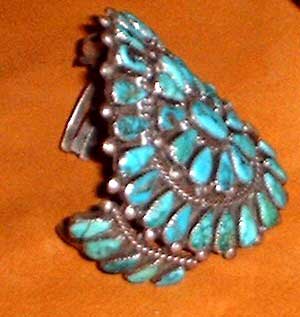  
VELASCO TEXAS
History of Velasco Texas and the people that once lived there

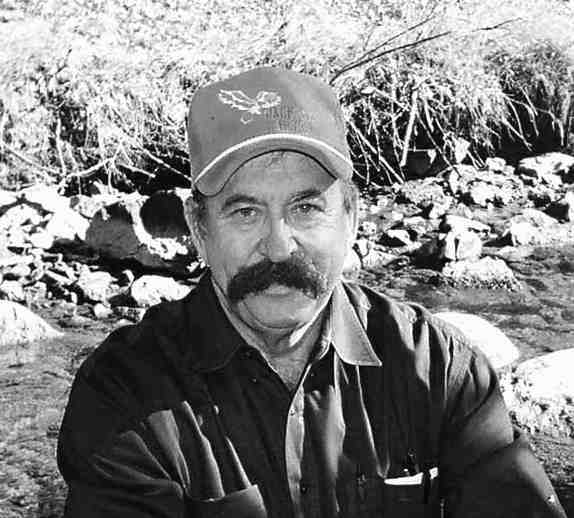
VELASCO TEXAS WEBPAGE
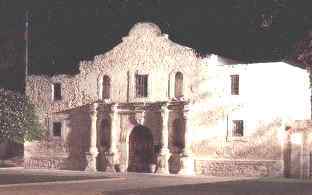
Velasco-Landing Site for Stephen F. Austin's Colonists (1821)
In 1821, the schooner Lively landed at the Velasco site with thirty-eight men, the first of Stephen F. Austin's colonists. At that time, Velasco consisted of a single building on the east side of the Brazos River approximately sixteen miles south of Angleton in Brazoria County.
Fort Velasco Founded in 1831
In 1831, Mexico decided that the Velasco site would be useful in bringing in settlers, shipping goods and moving troops so they established a customs port at Fort Velasco and stationed troops there to help the customs collector. The town of Velasco was named for a Mexican general.
Fort Velasco-Site of the first Texann Uprising (1832)
Lieutentant-Colonel Dominic Ugartachea, was in command at Fort Velasco with a force of one hundred and twenty-five men and a small piece of artillery.
On the morning of the 25th of June in 1832, the Texans with one hundred and twelve men, under the command of Captain John Austin, approached Fort Velasco, and made a formal demand of the surrender of Fort Velasco. As part of the surrender, the Mexican soldiers could leave Texas with their arms.
When Lieutentant-Colonel Dominic Ugartachea refused the terms of surrender, the Texans under the leadership of Capt. John Austin, attacked Fort Velasco. Initially, a schooner that was aground above the fort, was dislodged and set afloat with 40 Texans, under the command of Captain William I. Russell.The boat was equipped with a light piece of artillery and ammunition and floated down and moored close to the bank, adjacent to the fort.
The Texan land-forces then marched to the fort and the battle began. The Texan land forces were out in the open but the artillery in the fort was aimed at the schooner and overshot the men next to the fort walls. The Texan sharp shooters were deadly at such close range and began picking off the Mexican soldier. The Texan fire from the schooner was also deadly causing the Mexican soldiers to rush out of the fort in an attempt to board the vessel, but the fire of the Texans drove them back with heavy losses. After a 11 hour battle, the Mexicans raised the white flag signalling surrender. The Mexicans were disarmed, furnished with provisions, and set free. The loss of the Texans in this battle was seven killed and twenty-seven wounded; that of the Mexicans, thirty-five killed and fifteen wounded. Although this skirmish was serious in nature, the Mexican Government was engaged in another internal revolt and patched things up with the Texans.
By 1835, more than 25,000 settlers entered the Texas territory through the port of Velasco. The community of Velasco developed upstream from the coast. By this time, Velasco has a customhouse, salt works, and two trading posts.
Velasco Becomes First Capital of the Republic of Texas (1836)
After the battle of San Jacinto, acting President of the Republic of Texas, David G. Burnet, made Fort Velasco the temporary capital of the Republic of Texas. Government records were then housed at Fort Velasco until the first capital of Texas was established at Columbia. Antonio L�pez de Santa Anna signed the treaties of Velasco on May 14, 1836. SEE The Dual Treaties of Velasco that Founded the Republic of Texas
Velasco Thrives the Next 30 Years
Between the Texas Revolution and the Civil War, Velasco and Quintana (settlement across the River from Velasco) served as summer resorts for wealthy plantation families of the region. Galveston businessmen Samuel May Williams and Thomas F. McKinney established warehouses and organized shipping of all kinds at the port. A seminary for young ladies, Velasco Female Academy, and a school for young men, taught by Oxford graduates, were established by 1838. Comfortable hotels were built to accommodate visitors and patrons of the racetrack located a short distance upriver.
Velasco Gets a Post Office (1846)
Velasco was assigned a post office ehich operated from 1846 until 1891. With the closing of the Velasco Post Office, local mail was rerouted through Quintana across the river. Antebellum Velasco had business houses, homes, a hotel, boarding houses, wharves, and a customhouse; riverboats embarked from the wharves for Galveston and New Orleans. With completion of the first intracoastal canal to Galveston Bay in 1856, however, the town began to decline as shipping was diverted to Galveston.
Velasco's Importance During the Civil War Gets a Post Office (1846)
During the Civil War, the port of Velasco was fortified by Confederate troops and eight gun batteries, and Union ships were forced to go to New Orleans for drinking water, food, and fuel. The port played an active role in the exchange of cotton for European guns, ammunition, milled goods, and medicines for army and home use. Federal vessels attempted to stop vital trade and fired upon shore defenses, patrols, and small craft seeking to outrun them.
Velasco's Decline After the Civil War
With the ruin of the plantation system after the war, Velasco and Quintana declined as resorts. In 1875 a hurricane destroyed even the old town records. By 1884, when its residents numbered fifty and local farmers shipped livestock, Velasco had been reduced to semiweekly steamer service to Brazoria and reported only a general store and a boat builder's shop.
New Town of Velasco Established in 1891
The new town of Velasco was surveyed and laid out in 1891, when a new Velasco post office was established. The port was officially opened by the United States secretary of the treasury on July 7, 1891. A year later over $1 million worth of lots had been sold. Promoters working throughout the Midwest advertised the Velasco Hotel and an area along the river designed as Riverside Park. By 1892 Velasco had 136 business establishments and 167 residences, an electric light plant, and a planing mill. Jetties were built by the Brazos River Channel and Dock Company by 1897, and the newly dug deepwater port ran to a depth of 17� feet. New settlers traveled to Houston by train, to Columbia on the Columbia Tap branch of the International and Great Northern Railroad, and by riverboat down the Brazos to Velasco. The Velasco Terminal Railway, completed around 1890, allowed passengers to proceed directly from the Columbia Tap connection at Anchor to the new town. According to some sources, much of Velasco, first owned by John A. and William H. Wharton, was later sold to an agent of the English Rothschild family, who planned to establish a great seaport at the site. By 1896 the community had a new lighthouse, several churches, schools, hotels, a national bank, a cottonseed oil mill, cotton gins, special and general stores, and two weekly newspapers, the Times and the World. In that year Velasco shipped cottonseed oil, cotton, lumber, and livestock.
New Town of Velasco Destroyed by Hurricane of 1900
Surfside, or Old Velasco, and Crescent Beach could be reached by electric railroad. The population was 3,000 when the Galveston hurricane of 1900 wrecked the town.
Velasco rebuilt slowly, enduring fluctuations of poverty and prosperity. By 1914, with a population of 1,000 and only one newspaper, the World, remaining, the community had a fish and oyster plant and shipped cattle, cotton, cane sugar, and syrup. The population dropped to a low of 400 in the mid-1930s, when the town supported twelve businesses. But diversion of the Brazos River and the formation of a tidal estuary deep enough to accommodate large vessels in the old river channel subsequently revived both Velasco and nearby Freeport. Construction of chemical-industry facilities during World War IIqv increased the population from 900 in 1940, when the city was incorporated with E. F. Roeller as mayor, to 5,200 by 1950. With a population estimated at 4,000 in 1956, Velasco was incorporated with Freeport on July 27, 1957. The post office became Velasco Station. The community subsequently became part of the Brazosport industrial and port area and Brazosport Independent School District.
BIBLIOGRAPHY: James A. Creighton, A Narrative History of Brazoria County (Angleton, Texas: Brazoria County Historical Commission, 1975). P. E. Peareson, "Reminiscences of Judge Edwin Waller," Quarterly of the Texas State Historical Association 4 (July 1900). Edna Rowe, "The Disturbances at Anahuac in 1832," Quarterly of the Texas State Historical Association 6 (April 1903). Henry Smith, "Reminiscences of Henry Smith," Quarterly of the Texas State Historical Association 14 (July 1910). Velasco Harbor Opening, December 15, 1891: Public Sale of Lots, December 16 and 17 (Velasco, Texas: Texas Land and Immigration Company, 1891). Vertical Files, Barker Texas History Center, University of Texas at Austin.
 For questions or comments, send me an Email For questions or comments, send me an Email
|




 For questions or comments, send me an Email at lenkubiak.geo@yahoo.com
For questions or comments, send me an Email at lenkubiak.geo@yahoo.com

 Return to the Fort Tumbleweed Home Page
Return to the Fort Tumbleweed Home Page


